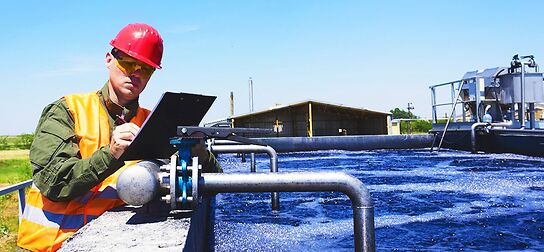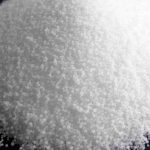The Water Quality Association defines alkalinity as the quantitative capacity of water to neutralize an acid; that is, the measure of how much acid can be added to a liquid without causing a significant change in pH. Alkalinity is often confused with pH as water with a pH above 7 is commonly referred to as alkaline. Alkalinity is not the same as pH because water does not have to be strongly basic (pH above 7) to have a high alkalinity level. Alkalinity is related to pH, because higher levels of alkalinity are useful in stabilizing the pH level. Alkalinity is typically comprised of bicarbonate (HCO3) carbonate (CO3) and/or Hydroxide (OH), but it can also include other anions such as silicates and phosphates. The alkalinity in most water supplies is made up of dissolved bicarbonate salts. Most natural drinking water has an alkalinity in the range of 10 to 500 mg/l. Alkalinity in drinking water is due largely to the presence of sodium, calcium, and magnesium carbonates.
What do the results mean? Regulations? Standards? Alkalinity is not regulated as a contaminant. Since alkalinity is related to pH, which can cause corrosion problems, it is an important test to run on water exhibiting corrosive symptoms. When a public water supply exceeds the action level for lead and copper, they must perform a corrosion control study which includes testing for alkalinity as well as pH, TDS, Conductivity and other suspect contaminants.
How do you test for Alkalinity? Many methods for alkalinity are based upon a titration. The basic method uses an acid to bring the pH level down to an end-point, which can vary, based upon application. The amount of acid used is indicative of the alkalinity level. Many colorimetric tests will use an acid with a color indicator to perform a simple titration in the field. You can get more accurate results using some more sophisticated equipment such as: burettes, pH meter, magnetic stirrer and pipettes.
Water Treatment Options Since some alkalinity is present in most water supplies and doesn’t present a problem itself, the only reason to adjust the alkalinity is when you want to stabilize the pH levels. Since pH can cause corrosion, it should be addressed to maintain plumbing and preventing premature equipment failure. Alkalinity is often raised when soda ash is fed to also raise the pH. Alkalinity will also be affected by using limestone feed tanks or other neutralizing filters.



Comments are closed